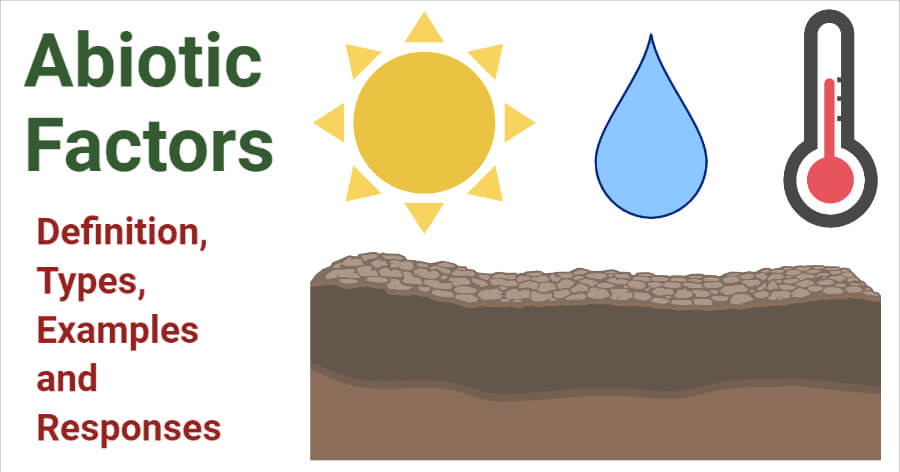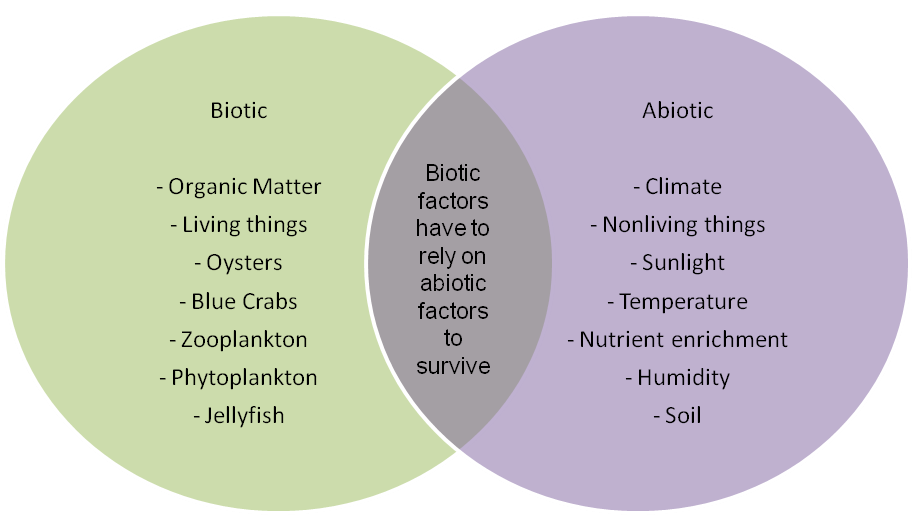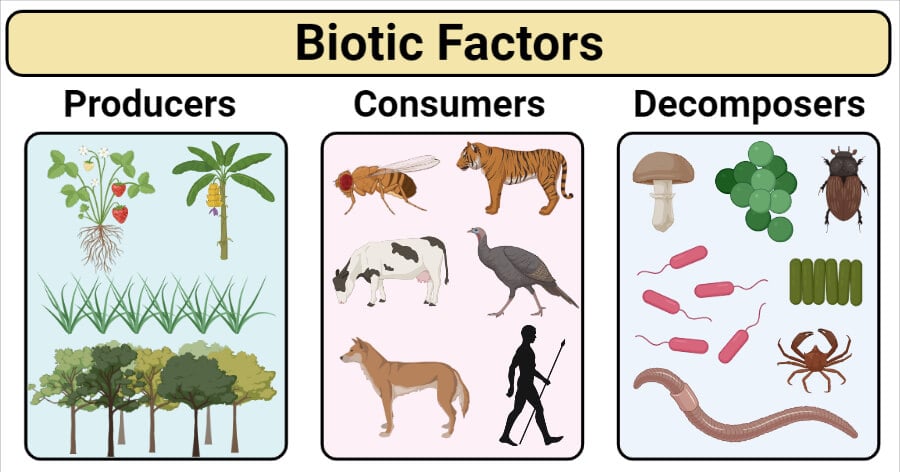Topic what is abiotic ecosystem: Discover the unseen forces of nature in "What is Abiotic Ecosystem": a journey into the non-living elements that shape life on Earth.
Table of Content
- What are the examples of abiotic factors in an ecosystem?
- Examples of Abiotic Factors
- Impact of Abiotic Factors
- Overview of Abiotic Factors in Ecosystems
- YOUTUBE: Abiotic Factors in Ecosystems: Water
- Key Abiotic Factors and Their Roles
- Influence of Abiotic Factors on Biodiversity
- Abiotic vs. Biotic Components in Ecosystems
- Human Impact on Abiotic Ecosystem Components
- Adaptations to Abiotic Environmental Factors
- Case Studies: Desert, Tundra, and Aquatic Ecosystems
- Research and Conservation Efforts
What are the examples of abiotic factors in an ecosystem?
Examples of abiotic factors in an ecosystem include:
- Temperature
- Light intensity
- Water availability
- Soil composition
- pH level
- Atmospheric pressure
- Wind speed
- Oxygen concentration
- Mineral availability
READ MORE:
Examples of Abiotic Factors
- Temperature
- Light
- Water
- Soil composition
- Salinity
- Humidity

Impact of Abiotic Factors
Abiotic factors determine the availability of resources like sunlight and water, influencing which organisms can survive in a particular environment. For instance, deserts are characterized by low rainfall and extreme temperatures, creating unique ecosystems distinct from wetter biomes like tropical rainforests.
Desert Ecosystems
In deserts, the scarcity of water and extreme temperature fluctuations lead to the development of specialized organisms adapted to these harsh conditions.
Tropical Rainforests
Tropical rainforests, on the other hand, receive abundant rainfall and have warm temperatures year-round, supporting dense and diverse ecosystems.
Human Influence
Human activities, such as pollution, can also introduce new abiotic factors, altering the natural balance of ecosystems and affecting the survival of species.
Overview of Abiotic Factors in Ecosystems
Abiotic factors are the non-living components that play a pivotal role in shaping ecosystems. They form the foundation upon which biotic life depends, influencing the structure, distribution, and types of living organisms present in an ecosystem.
- Climate: Encompasses temperature, humidity, wind patterns, and precipitation, setting the stage for the types of ecosystems that can thrive in a given area.
- Water: Availability and quality of water in an ecosystem dictate the survival of plant and animal species, influencing their distribution and abundance.
- Soil: Soil composition, pH, and texture affect the types of vegetation that can grow, thereby shaping the habitat for various animal species.
- Light: Sunlight is crucial for photosynthesis, determining the energy base of most ecosystems and influencing the daily and seasonal behaviors of organisms.
- Atmospheric Gases: The composition of gases in the atmosphere, including oxygen, carbon dioxide, and nitrogen, is vital for different forms of life, influencing respiration, photosynthesis, and nitrogen fixation processes.
- Minerals: Essential for the growth and development of organisms, the availability of minerals in the soil supports diverse life forms.
These abiotic factors interact in complex ways, creating a unique set of conditions in each ecosystem that enables specific types of life to exist and thrive. Understanding these factors is crucial for conservation efforts and for predicting how ecosystems might change over time.

Abiotic Factors in Ecosystems: Water
Dive into the mesmerizing world of water in this captivating video. Discover the wonders of marine life, breathtaking underwater landscapes, and the importance of water conservation. Get ready to be amazed by the beauty and power of this essential element that sustains all life on Earth.
GCSE Biology: Biotic and Abiotic Factors
Uncover the intricate web of life with this fascinating video on biotic and abiotic factors. Explore the delicate balance between living organisms and their environment, and how they interact to create thriving ecosystems. Gain a deeper understanding of how these factors shape and influence the world around us. Don\'t miss out on this enlightening journey into the realm of biology.
Key Abiotic Factors and Their Roles
Abiotic factors are nonliving elements within ecosystems that significantly influence the living environment. These factors include physical and chemical aspects such as sunlight, soil chemistry, and climate, which shape healthy ecosystems. The balance of these elements is crucial for the flourishing of life, as they determine the availability of essential resources like sunlight, water, oxygen, and minerals.
- Temperature: Influences metabolic rates of organisms and determines the geographical distribution of species.
- Water: Essential for life, its availability and quality affect the survival and distribution of plants and animals.
- Soil Composition: Affects the types of vegetation that can grow, influencing the terrestrial food chains.
- Light: Drives photosynthesis in plants and impacts the feeding and reproductive behaviors of various species.
- Wind: Can shape physical environments, affect heat and water loss in organisms, and influence seed dispersal.
- Salinity: Especially important in aquatic ecosystems, influencing the species composition in bodies of water.
- Humidity: Influences transpiration rates in plants and can affect the hydration and comfort levels of animals.
These abiotic factors not only define the physical and chemical foundation of ecosystems but also influence the interactions among various biotic components, thereby dictating the types of ecosystems that can exist in particular environments. For instance, the distinct characteristics of deserts, such as low rainfall and extreme temperatures, lead to the development of ecosystems that are vastly different from those in more temperate or aquatic environments.
Influence of Abiotic Factors on Biodiversity
Abiotic factors, the non-living elements like climate, soil, water, and sunlight, play a crucial role in shaping biodiversity. These elements create the varied habitats and conditions that support different forms of life, influencing the distribution and abundance of species across ecosystems.
- Climate: Temperature and precipitation patterns determine the types of species that can thrive in an area. For example, tropical rainforests with high warmth and humidity support a vast array of plant and animal life, while arid deserts support species adapted to dry conditions.
- Soil Composition: The type and nutrient content of soil affect the variety of plant species that can grow, which in turn influences the diversity of herbivores and predators in the food web.
- Water Availability: Bodies of water and moisture levels dictate the living conditions for aquatic and terrestrial organisms alike. Areas with abundant water resources support lush vegetation and diverse animal life, whereas water scarcity leads to specialized adaptations in flora and fauna.
- Sunlight: The availability of sunlight affects photosynthesis, driving the primary productivity that supports the food chain. In aquatic ecosystems, sunlight penetration influences the zonation of marine life, with different species adapted to varying light levels.
Changes in abiotic factors, whether through natural processes or human activities, can significantly impact biodiversity. Alterations in climate patterns, soil degradation, changes in water availability, and pollution can shift the balance of ecosystems, leading to changes in species composition and abundance. Understanding the influence of abiotic factors is crucial for conservation efforts, as it helps identify the conditions necessary for the survival of diverse species and the maintenance of healthy ecosystems.

Abiotic vs. Biotic Components in Ecosystems
Ecosystems are complex networks of interactions between living organisms and their environment. These interactions are governed by two primary components: abiotic and biotic. Understanding the differences and relationships between these components is essential for comprehending ecosystem dynamics.
Abiotic Components
Abiotic components are the non-living physical and chemical elements in an ecosystem. They form the foundation upon which ecosystems are built and include:
- Climate: Temperature, humidity, and precipitation patterns that influence ecosystem conditions.
- Water: Availability and quality of water resources, essential for life.
- Soil: Composition, structure, and fertility affecting plant growth and habitat quality.
- Sunlight: Source of energy for photosynthesis, driving primary productivity.
- Air: Composition of the atmosphere, critical for respiration and photosynthesis.
- Minerals: Nutrients required for the growth of organisms.
- Topography: Landscape features that influence ecosystem patterns and processes.
Biotic Components
Biotic components refer to the living elements of an ecosystem. These components interact with each other and with abiotic factors to sustain life. They include:
- Producers (Autotrophs): Organisms that synthesize their own food from abiotic components, such as plants.
- Consumers (Heterotrophs): Organisms that obtain energy by consuming other organisms, including herbivores, carnivores, and omnivores.
- Decomposers: Organisms that break down dead organic matter, returning nutrients to the soil.
- Microorganisms: Bacteria, fungi, and other microscopic life forms that play critical roles in nutrient cycling and decomposition.
Interactions Between Abiotic and Biotic Components
The interaction between abiotic and biotic components is fundamental to ecosystem function. Abiotic factors influence the distribution, behavior, and adaptation of living organisms, while biotic components modify their environment to some extent. For example, plants (biotic) can alter soil composition (abiotic) through root growth and the decomposition of organic matter. Conversely, soil fertility (abiotic) can affect plant distribution and health (biotic).
In conclusion, ecosystems are intricate systems where abiotic and biotic components interact in a dynamic balance. Understanding these interactions is crucial for the conservation and management of natural environments and for predicting the impacts of environmental changes.
Human Impact on Abiotic Ecosystem Components
Human activities have profound effects on the abiotic components of ecosystems, altering their function and the overall health of the environment. These impacts can be observed globally, affecting water, air, soil, climate, and more. Understanding these influences is crucial for developing strategies to mitigate negative effects and promote sustainability.
Climate Change
One of the most significant human impacts on abiotic components is climate change, driven by the emission of greenhouse gases such as carbon dioxide and methane. This leads to:
- Increases in global temperatures, affecting weather patterns and ecosystems.
- Alterations in precipitation patterns, leading to droughts or floods.
- Rising sea levels, impacting coastal and marine ecosystems.
Pollution
Various forms of pollution also play a critical role in altering abiotic components:
- Water Pollution: Contamination of water bodies with chemicals, waste, and other pollutants affects water quality and aquatic life.
- Air Pollution: Emission of pollutants into the atmosphere can change its composition, leading to health issues in living organisms and contributing to acid rain and climate change.
- Soil Pollution: The introduction of harmful substances into the soil can degrade its quality, affecting plant growth and the organisms that depend on them.
Land Use Change
Human activities such as deforestation, urbanization, and agriculture result in significant land use changes that affect abiotic components:
- Reduction of natural habitats, impacting biodiversity.
- Soil erosion and degradation, affecting soil health and water cycles.
- Changes in local climate and microclimates due to alterations in land cover.
Resource Exploitation
The extraction and consumption of natural resources also have direct impacts on abiotic components:
- Water extraction for agriculture and industry can lead to the depletion of aquifers and changes in hydrological systems.
- Mining and drilling disrupt the soil and subsoil, affecting ecosystems and sometimes leading to pollution.
- Fossil fuel consumption contributes to air pollution and climate change.
Addressing the human impact on abiotic ecosystem components requires a multifaceted approach that includes reducing emissions, conserving natural habitats, improving waste management, and promoting sustainable resource use. Through collective action and sustainable management practices, it is possible to mitigate these impacts and protect ecosystem health for future generations.

Adaptations to Abiotic Environmental Factors
Organisms have developed a myriad of adaptations to survive and thrive in the face of varying abiotic environmental factors such as temperature, water availability, sunlight, wind, and soil conditions. These adaptations are crucial for their survival, reproduction, and the maintenance of biodiversity. They range from physiological and morphological to behavioral strategies, enabling life in diverse ecosystems from deserts to polar regions.
Temperature Adaptations
Temperature significantly influences organismal distribution and function. Adaptations to extreme temperatures include:
- Thermoregulation: Mechanisms to maintain internal temperature, seen in mammals and birds.
- Insulation: Fur, feathers, or fat layers that insulate against cold temperatures.
- Behavioral strategies: Basking in the sun or seeking shade to regulate body temperature.
Water Availability Adaptations
Water is essential for life, and adaptations to manage water scarcity or excess are vital:
- Water conservation: Desert plants like cacti store water; animals may produce concentrated urine.
- Waterproofing: Waxy plant leaves and water-repellent animal coats reduce water loss.
- Root adaptations: Deep or widespread roots to maximize water absorption.
Sunlight Adaptations
Sunlight is crucial for photosynthesis and influences various life forms:
- Leaf orientation: Some plants can adjust their leaf orientation to maximize or minimize sunlight exposure.
- Pigmentation: Pigments like melanin in animals can protect against UV damage.
Soil and Nutrient Adaptations
The type and quality of soil affect plant growth and, consequently, the entire ecosystem:
- Root specializations: Certain plants have symbiotic relationships with fungi to enhance nutrient uptake.
- Tolerance to soil pH: Some plants are adapted to grow in highly acidic or alkaline soils.
Adaptations to Wind
Wind can affect moisture loss, temperature, and physical damage, leading to adaptations such as:
- Streamlined bodies: Many plants and animals have shapes that reduce wind resistance.
- Flexible structures: Plants especially may be flexible to withstand high winds without breaking.
These adaptations demonstrate the remarkable ability of organisms to optimize their survival and reproduction in the face of environmental challenges. They are the result of millions of years of evolution, highlighting the intricate relationship between life and the abiotic components of their ecosystems.
Case Studies: Desert, Tundra, and Aquatic Ecosystems
This section explores the influence of abiotic factors in three distinct ecosystems: deserts, tundras, and aquatic environments. Each ecosystem is shaped by unique abiotic components that dictate the conditions for life.
Desert Ecosystems
Deserts are characterized by low precipitation, high temperature variability between day and night, and sandy or rocky soil. The primary abiotic factors include:
- Temperature: Extreme heat during the day and cold at night.
- Water: Scarcity of water shapes the survival strategies of flora and fauna.
- Soil: Often sandy with low organic matter, affecting plant root systems.
Organisms in deserts have evolved adaptations such as water conservation in plants (e.g., cacti) and nocturnal lifestyles in animals to cope with these conditions.
Tundra Ecosystems
The tundra is a cold, treeless biome with a short growing season and permafrost. Key abiotic factors include:
- Temperature: Cold temperatures with little seasonal variation.
- Soil: Permafrost limits plant growth to a shallow active layer in the summer.
- Light: Long days in summer and long nights in winter affect plant and animal behavior.
Adaptations here include animals with insulating fur and migratory birds. Plant life is limited to low-growing species like mosses and lichens.
Aquatic Ecosystems
Aquatic ecosystems are divided into freshwater and marine systems, each with distinct abiotic factors:
- Water salinity: Determines the species composition between freshwater and marine systems.
- Temperature: Varies with depth, latitude, and water flow, influencing organism distribution.
- Light penetration: Affects photosynthesis rates and depth at which plants can grow.
In freshwater ecosystems, adaptations include the ability to regulate salinity internally in organisms. In marine ecosystems, coral reefs showcase symbiotic relationships adapted to maximize light utilization.
Understanding these abiotic factors and their interactions with biotic components is crucial for conservation efforts and predicting the impact of climate change on these diverse ecosystems.

READ MORE:
Research and Conservation Efforts
Addressing the challenges faced by ecosystems due to the impact of abiotic factors, research and conservation efforts are critical in preserving biodiversity and ensuring ecosystem resilience. These efforts are multifaceted, involving both local and global initiatives.
Research Initiatives
Scientific research plays a pivotal role in understanding how abiotic factors influence ecosystems. Key research initiatives include:
- Climate Change Studies: Investigating how changes in temperature and precipitation patterns affect ecosystems.
- Water Quality Research: Assessing the impact of pollutants on freshwater and marine ecosystems.
- Soil Conservation Techniques: Developing methods to prevent soil degradation and promote sustainable agriculture.
These studies help identify critical trends and inform conservation strategies, ensuring that ecosystems can adapt to changing conditions.
Conservation Strategies
Conservation efforts aim to protect ecosystems by preserving their abiotic and biotic components. Strategies include:
- Protected Areas: Establishing national parks and reserves to safeguard habitats from human activities.
- Restoration Projects: Rehabilitating ecosystems that have been degraded by pollution, deforestation, or other disturbances.
- Policy and Legislation: Implementing laws and regulations to reduce pollution, manage natural resources sustainably, and combat climate change.
Community involvement and education are also vital, fostering a culture of conservation and promoting sustainable practices among the public.
Global Cooperation
Conservation is a global endeavor, requiring cooperation across nations and disciplines. International agreements, such as the Paris Agreement on climate change and the Convention on Biological Diversity, play a critical role in coordinating efforts to protect ecosystems. By sharing research, resources, and best practices, countries can work together to mitigate the impacts of abiotic factors and preserve the planet"s biodiversity for future generations.
Through ongoing research and dedicated conservation efforts, there is hope for sustaining the health and diversity of ecosystems worldwide. It is a collective responsibility that involves scientists, policymakers, communities, and individuals working together to protect our natural world.
Exploring abiotic ecosystems unveils the intricate balance between non-living factors and life on Earth. Understanding this interplay is crucial for conservation and offers a fascinating glimpse into the resilience and adaptability of nature.





